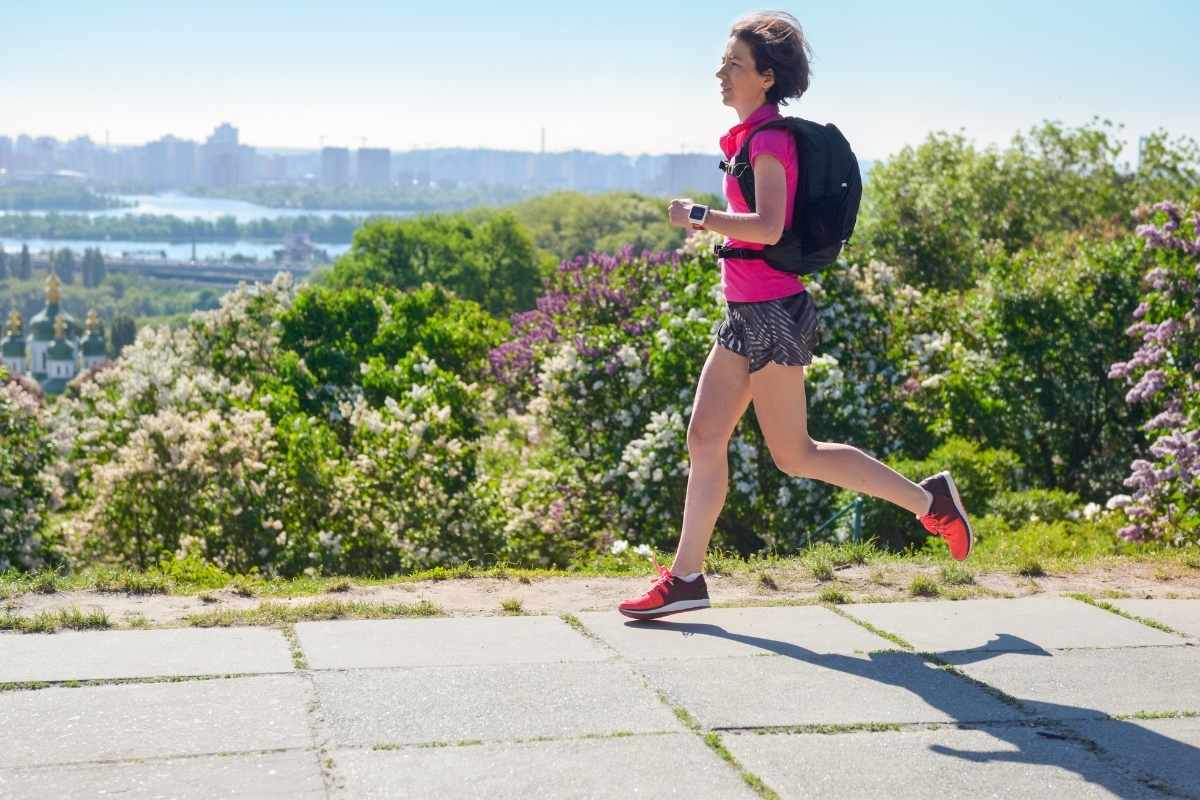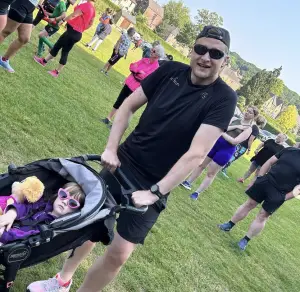I regularly run to and from work with a backpack.
My main motivation for this was to try and lose a bit of weight while avoiding the usual commuter nightmare. I was interested to know if running with my kit would, therefore, burn more calories.
Running with a backpack does burn more calories. It increases energy expenditure by 10-15% of what is generally expected without a backpack, depending on how heavy it is.
It is essential that when choosing to take up running, you do so with your health at the forefront of your mind. Maintaining your running fitness is a direct outcome of regular exercise and nutrition. Running is a fantastic way to burn calories and help your body become healthy and lean.
Just like with any activity, proper form (especially when adding weight ) is essential for running to truly benefit your health. Running with a backpack will burn more calories.
Burning more calories
To touch on calories and running, the calories in food provide our bodies with energy in the form of heat so that we can function. Our bodies store and “burn” calories as fuel. So, when we exert power by running, our bodies are using our caloric fuel to keep us moving. The faster pace and the longer distance run mean more calories burned.
Any extra weight while running will burn more calories. If you run to work every day, and you decide to carry a backpack holding your possessions, you will burn more calories than if you run without it.
Fat-burning running with a backpack
To touch on fat-burning percentage and running with and without weights. So, the topic of fats and burning “fat” is complex and can be challenging to explain, mainly because of the way the media portrays diets, exercise, fats, etc.
In the most straightforward words possible, the calories in fats as well as carbohydrates, proteins and alcohol all provide the body with energy. The body uses carbohydrates and fat reserves as fuel during various activities.
The percentage of energy coming from fat reserves will be higher or lower depending on the type of activity. Generally speaking, you will burn a higher % of fat during low-intensity activities. Running at a slower pace for a longer distance will likely burn more energy provided from fat reserves than running at a faster speed for shorter distances. Also, the more fit you are, the easier it is for your body to use energy provided by fat reserves as fuel.
IMPORTANT: Please remember that burning fat does not equate to losing weight. If burning fat is what you want to do, then you should run at a pace that you would be able to keep up a conversation. Plus, you must run for longer than thirty minutes to even begin that as your body will first reach into carbohydrate reserves to fuel energy expenditure than fat reserves.
It is also important to note that when running with a backpack to burn more calories, you may not burn more calories from fat because of the extra weight.
Extra endurance
Running with a backpack may help you to improve running form and breathing, which will increase your ability to run for more extended periods (endurance). Running with extra weight will also potentially help you to gain more muscle, which can eventually improve fitness. It is easier for a fit body to burn fat than it is for an unfit body to burn fat.
If you are interested in all of that science, feel free to follow the source links at the bottom for more available information on the topic.
However, this article will be geared towards explicitly running with a backpack and how it burns more calories than running without one. This article also covers incorporating running with a backpack into your life.
Benefits Of Running With a Backpack
- It incorporates more aspects of strength training along with the cardiovascular benefits of running.
- It increases energy expenditure by 10-15% of what is generally without weight (that extra calorie burning!)
- It increases heart rate by 5-10 beats per minute.
- It also increased by 10-15% is oxygen consumption (Oxygen intake provides energy to your body while exercising)
Safely Running With a Backpack
- Take into consideration how much total weight you are safely capable of carrying on your back while running. Ideally, add no more than 5-10% of your body weight.
- It is necessary to wear an appropriate backpack while running. Large, loose-fitting backpacks are a definite no-go. You should try a compact, lightweight pack first.
- A belt strap help so that it fits your body snugly rather than bouncing up and slamming into your back every step you take. Using a backpack without a strap can cause more pain and damage to your body than burning the calories will do good for you.
- Pack you pack accordingly. Start light and slowly increase the weight, almost so slowly that it is difficult for you to notice that you are even adding weight each time that you do. This ensures that your body gets used to running with the amount of added weight that you are.
- Being uncomfortable is normal when pushing yourself to exercise in a new way. Working new muscles or increasing your muscle mass, lung strength, and endurance will cause this. However, PAIN is never a normal or healthy experience while exercising. Especially from added weight while running.
- If you feel in pain because of the added weight of a backpack, find another way to get your belongings to work.
- Always exercise with the proper running form of course. When adding weight while running even more, so be sure to practice the correct form.
- Another thing to note is that if you do not take the time to practice the proper form with the extra weight, you can cause your body more harm. You may end up burning fewer calories than if you were to run with correct form and dropped the extra weight.
How To Refine Your Running Technique While Running With a Backpack
Shorten your steps
Carrying a backpack means that your legs must deal with extra weight and pressure every step you take. Shortening your steps will reduce the amount of force that will go through your legs as you run.
Set your mind to drive down forcefully with each step.
You may be tempted to slump forward and shuffle your feet while bearing extra weight. Be conscious of this so you can avoid slouching and shuffling every step.
Chin up, buttercup!
Intentionally keep your head up, and keep your chest forward. This will help you to engage your core. It is essential to always engage your core while running.
Squeeze your glutes
Engaging your glutes will engage your core, and you will be more conscious of the steps you are taking. Every technique you incorporate, positive or negative, while running connects to establishing your running form.
Keep as many of your work belongings at work.
If you must regularly travel with things such as a laptop, tablet, relevant paperwork etc. running to work may not be the best option for you.
Regardless, if you desire to run to work, make arrangements for what you cannot carry comfortably in a pack, to store at your workplace if at all possible.
How to pack your backpack
Try to avoid aimlessly throwing items into the backpack you will be running with. Loosely packed items will bounce around and cause carrying a backpack to be uncomfortable and unproductive because things will be bouncing into your back, or even possibly falling out.
This brings us to another point: secure your items by tightly sealing your backpack closed! Be sure not to over-pack your backpack and have items jabbing into your back, neck or rib cage.
An over-packed bag also makes it more likely to damage your bag, which should be a decent bag, that was probably not a cheap buy, so don’t ruin your valuable purchase!
Sources:
https://www.healthline.com/health/exercise-fitness/running-with-weights#benefits
https://www.livestrong.com/article/432700-how-to-run-with-a-backpack-to-get-in-shape/
https://www.runnersworld.com/uk/health/a762408/reader-to-reader-why-train-with-a-backpack/
https://www.livescience.com/52802-what-is-a-calorie.html
https://medlineplus.gov/definitions/nutritiondefinitions.html
https://www.unm.edu/~lkravitz/Article%20folder/fatfacts.html


